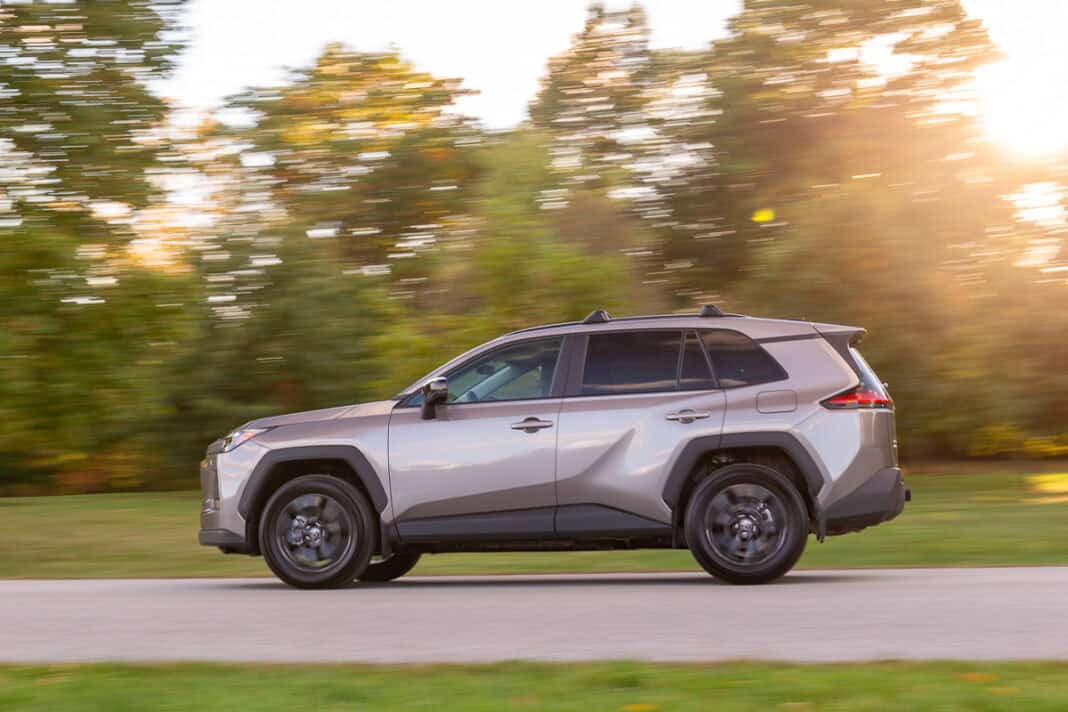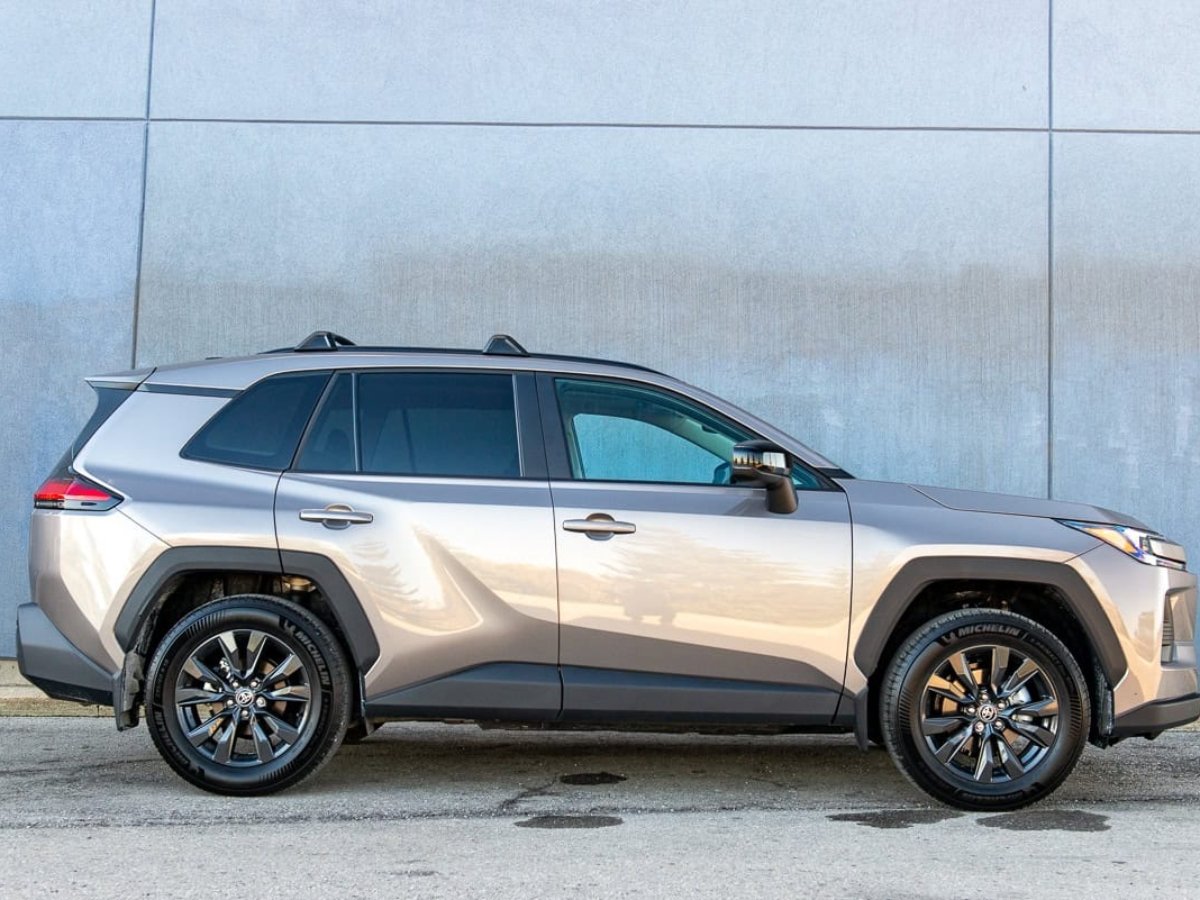If it ain’t broke, don’t fix it. Well, that doesn’t apply to the car world. Clearly, the RAV4 compact SUV is doing all the right things, not only out-selling its compact competitors but holding its own as North America’s best-selling SUV. The 2019 redesign was massive and much-needed, with some tweaks along the way, but as consumer tastes change, the rivals step up their game, and new tech sprouts up, change is inevitable no matter how well things are going. Risky? Perhaps. Compulsory? Absolutely.
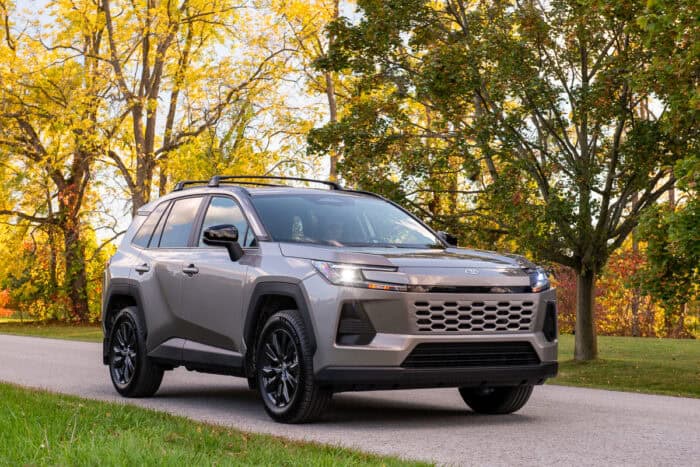
But there’s one RAV4 trim that’s led the way, and in our view, 2026 will be no different: the XLE. It’s the lower middle-child grade that balances value, efficiency, and comfort; the volume-seller most buyers look at now exclusively with hybrid power, AWD availability, safety tech, and standard features that make it feel premium without the price jump.
Related – The Base 2026 Toyota RAV4 Proves You Don’t Need a Higher Trim
Hitting the Sweet Spot For Most Consumers
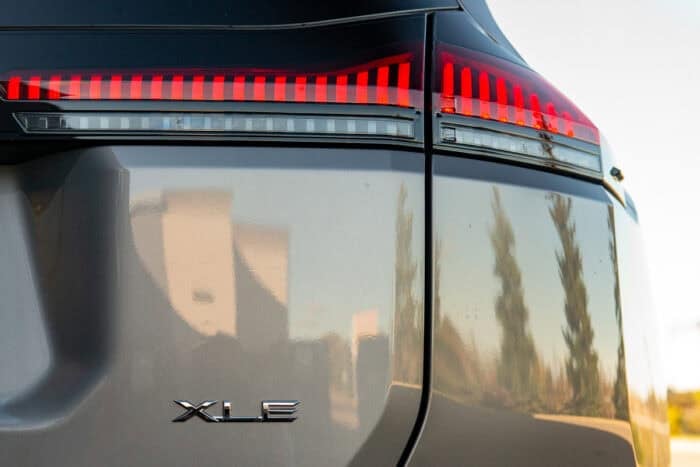
In a lineup that now includes everything from budget-friendly commuters to near-luxury trims (including the new outdoorsy Woodlands and, yes, a sportier GR flavor), the XLE Hybrid remains the RAV4’s sweet spot and the one that gets the balance just right. For 2026, Toyota sharpened the design, updated the hybrid system for more power and efficiency, and gave the cabin a meaningful tech refresh. The result feels familiar but fresher.
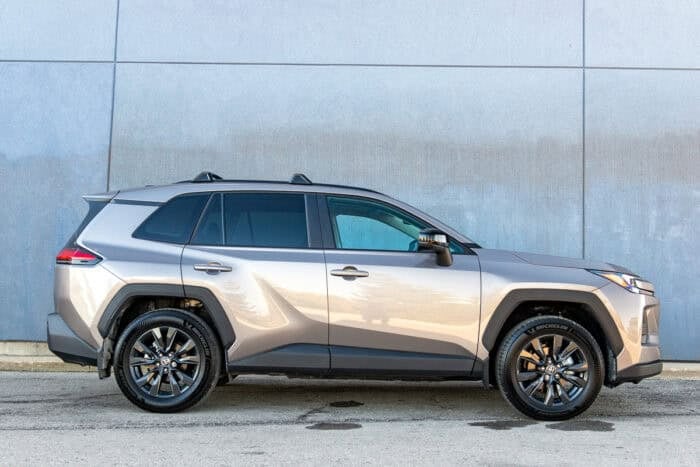
2026 RAV4 Trims Available
| Trim | U.S. Availability (2026) | Canada Availability (2026) |
|---|---|---|
| LE | Hybrid (FWD or AWD) – Core design | LE Hybrid AWD – Core design |
| XLE | Hybrid (FWD or AWD) – Core design | XLE Hybrid AWD – Core design |
| XLE Premium | Not listed for U.S. market | XLE Hybrid AWD – Premium package |
| Limited | Hybrid AWD – Core design | Limited Hybrid AWD – Core design |
| Woodland | Hybrid or Plug-in Hybrid (AWD) – Rugged design | Hybrid AWD – Rugged design |
| SE | Hybrid or Plug-in Hybrid – Sport design | Plug-in Hybrid AWD – Sport design |
| XSE | Hybrid or Plug-in Hybrid – Sport design | Hybrid or Plug-in Hybrid AWD – Sport design |
| GR Sport | Plug-in Hybrid AWD – Performance-focused | Plug-in Hybrid AWD – Performance-focused |
What continues to set the XLE apart is how well it blends “enough” of everything: performance, efficiency, and comfort, all without straying into luxury pricing. We also drove the premium XSE and the upgrades are worthy. But with XLE you get the hybrid powertrain, available all-wheel drive (standard in Canada), and a healthy list of standard features, from Toyota Safety Sense 3.0 to wireless connectivity, at a cost that keeps it grounded between the value-focused LE and the decked-out XSE. It’s the sweet spot of the lineup because it nails what the average driver actually needs, and Toyota knows it.
Related – First Drive: 2016 Toyota RAV4 Hybrid Review
Powertrain and Drive: Smooth, Strong, and Still the Smart Play
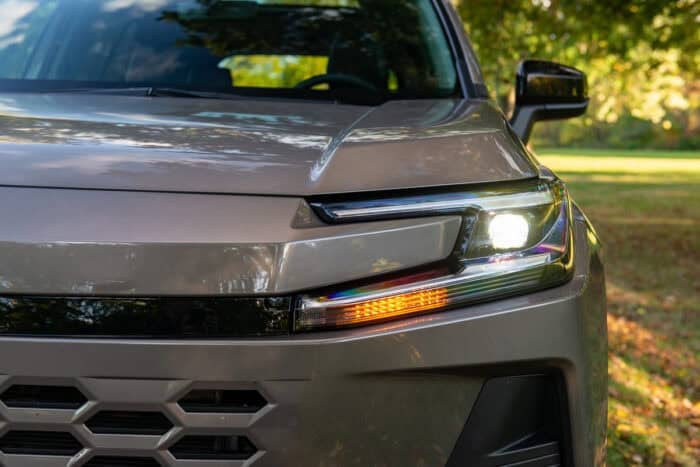
Out on the road, the XLE Hybrid feels exactly how a modern RAV4 should: smooth, composed, and just a little more confident than before. The 2.5-litre hybrid setup delivers its power in a quiet, linear way, making city commutes and highway merges feel effortless.
Toyota’s updated hybrid system now delivers a modest bump in both power and efficiency, with U.S. models targeting roughly 40 mpg combined (5.9 L/100 km in Canada). Slightly better than before and still among the best in its class.
There’s a touch more responsiveness than before, with Toyota’s updated hybrid system and electric motor coordination ironing out the occasional rough edge from previous years including the 2017 Toyota RAV4 SE Hybrid. It’s not quick in a performance sense, but it’s steady and satisfying. That kind of seamless power delivery that makes you forget about what’s happening under the hood.
Gas-powered RAV4s are no longer
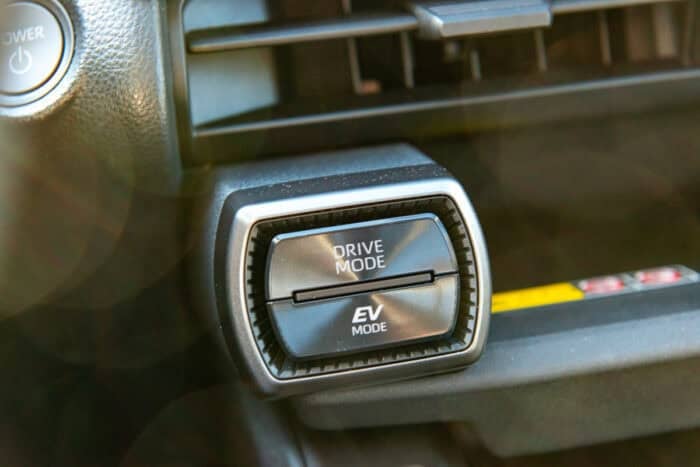
Toyota’s full shift to electrified powertrains makes trims like the XLE Hybrid the new baseline, and that’s a good thing. The added refinement in ride quality is immediately noticeable, especially at low speeds where the hybrid glides almost silently. There were some quirks with our pre-production model, like wind noise inside the cabin, but hey, it’s pre-production stuff that’ll be addressed before the 2026 RAVs hits the dealership later this year.
In classic Toyota fashion, the XLE doesn’t try to dazzle with complexity. That’s what the SE and XSE are for.
Steering feels a bit more planted, the suspension tuning absorbs bumps with less fuss, and there’s a maturity to the drive that fits the RAV4’s mass-market appeal. You don’t need to plug in or upgrade to the Prime to feel that hybrid punch or enjoy great mileage.
Interior and Features: Just Enough of Everything
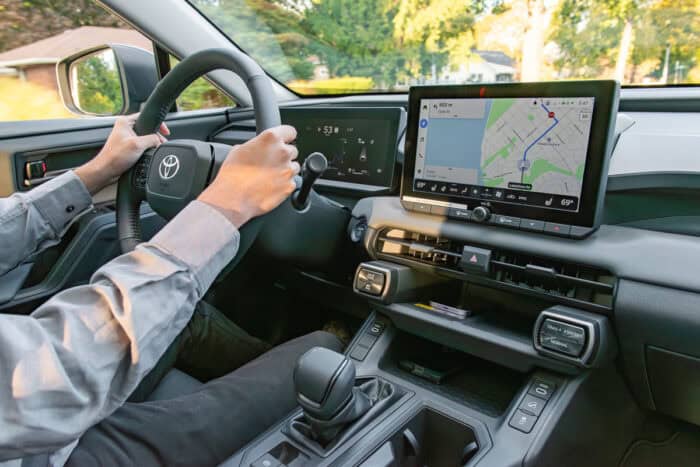
Inside, the 2026 RAV4 XLE Hybrid strikes that ideal middle ground between function and finesse. The new cabin design feels more cohesive and modern, with cleaner lines and a noticeable uptick in material quality like soft-touch panels where it counts, solid switchgear, and a layout that just makes sense.
We like how Toyota retained the temperature buttons below the new touchscreen, making it easier (and quicker) to adjust driver/passenger cabin comfort without fiddling with screen menus.
The new 12.3-inch centre display dominates the dash without feeling intrusive, paired with a digital cluster that finally brings the RAV4’s interface up to date. It’s intuitive, responsive, and free of the lag that plagued older Toyota systems, while still retaining physical buttons for climate and volume.
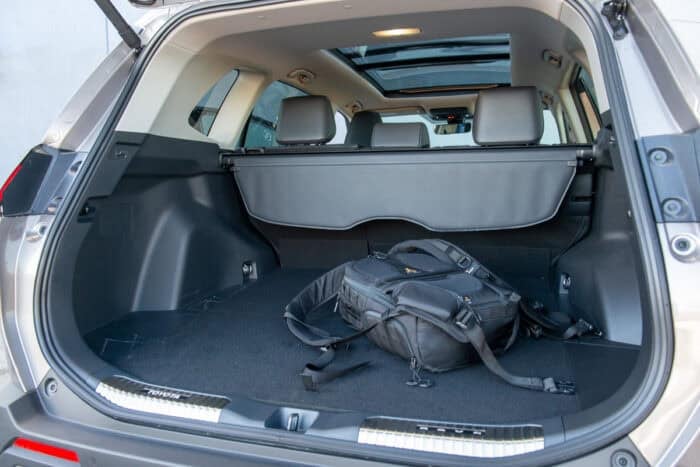
Comfort is still the XLE’s ace. The seating position feels natural with plenty of adjustability, visibility is excellent all around, and rear passengers won’t have much to complain about thanks to generous legroom and a flat load floor. Cargo space remains one of the biggest in the class, made even more usable by the RAV4’s low lift-over height.
Wireless charging, multiple USB-C ports, and Toyota Safety Sense 3.0 are all standard, adding convenience and peace of mind without fluff or gimmicks. In classic Toyota fashion, the XLE doesn’t try to dazzle with complexity. That’s what the SE and XSE are for.
Related – Honda CR-V Vs. Toyota RAV4: Boils Down to Choices
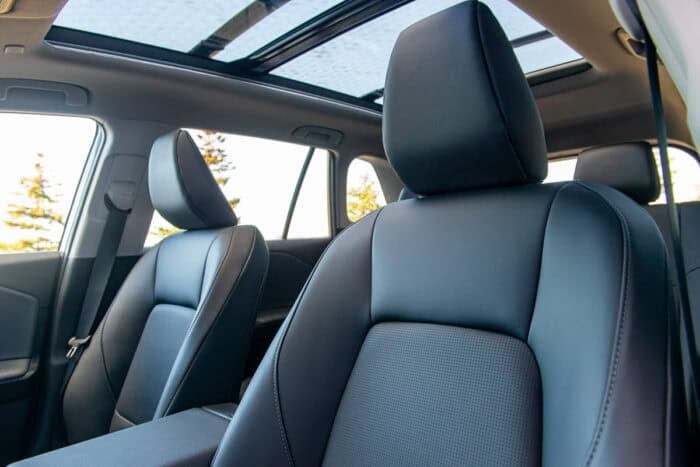
2025 RAV4 Interior Vs 2026 Model
Below, a quick look at the outgoing interior compared to the next-gen model. They’re not the same trim but this gives you a good idea of changes; overall, the 2026 RAV4 interior is much more streamlined with an improved center console area that’s better designed for efficiency and storage. We like how Toyota retained the temperature buttons below the new touchscreen, making it easier (and quicker) to adjust driver/passenger cabin comfort without fiddling with screen menus.
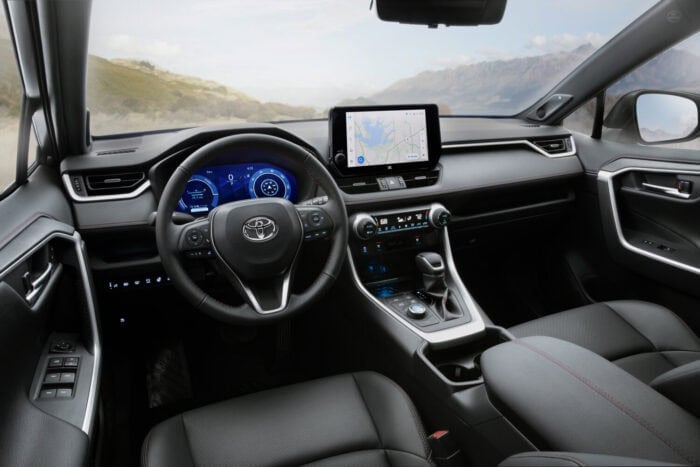
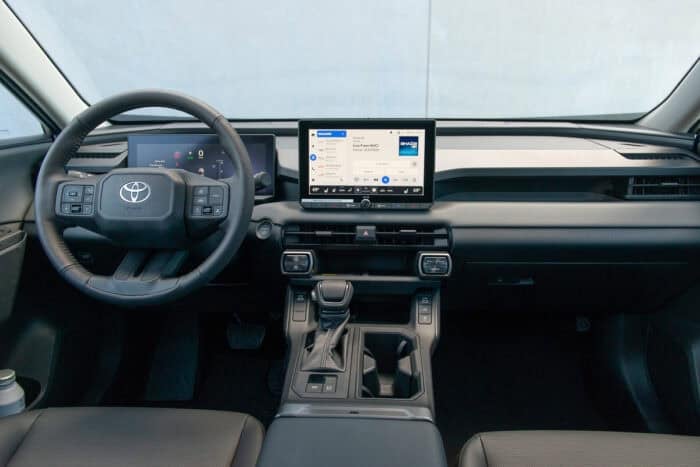
Fuel Efficiency, Price, and Real-World Value
Again, the 2026 RAV4 XLE Hybrid continues to be the trim that makes the most sense for most drivers, largely because it nails that elusive value-to-content balance. Toyota’s updated hybrid system now delivers a modest bump in both power and efficiency, with U.S. models targeting roughly 40 mpg combined (5.9 L/100 km in Canada). Slightly better than before and still among the best in its class. You get all-wheel drive standard in Canada and optional in the U.S., making it just as capable in snow and winter driving as it is efficient on long highway runs.
2026 RAV4 Pricing remains another strong point
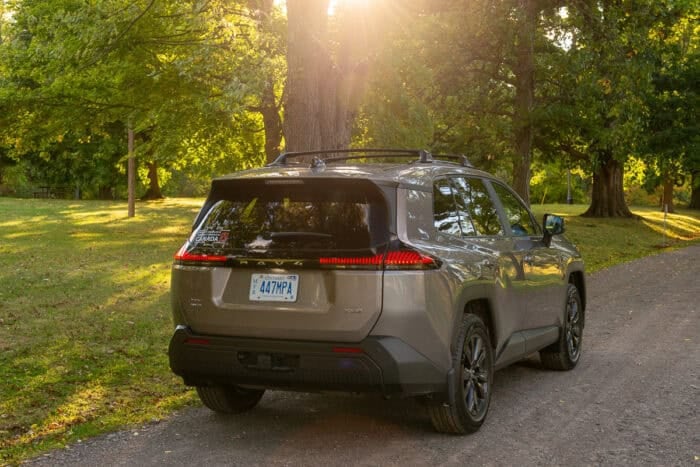
Pricing remains another strong point. Toyota hasn’t confirmed final numbers but for reference, the 2025 RAV4 XLE Hybrid started around $33,000 USD (≈ $39,000 CAD), sitting nestled between the base LE Hybrid (roughly $31,000 USD / $36,000 CAD) and the well-equipped Limited Hybrid (just under $39,000 USD / $44,000 CAD). This pricepoint clearly works for most RAV4 consumers seeking that feel premium without creeping into near-luxury territory. Even then, Toyota managed to pack in essentials like heated seats, dual-zone climate control, and a large touchscreen, making the XLE Hybrid the trim most buyers gravitated toward.
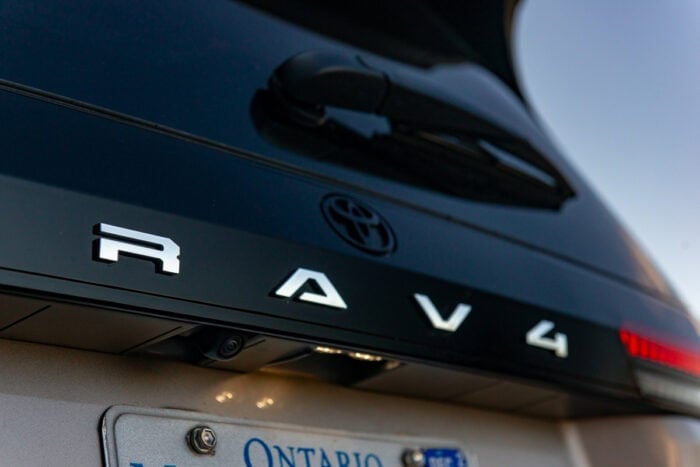
For 2026, expect prices to climb slightly likely around $34,000 USD (≈ $41,000 CAD) for the XLE Hybrid. But the value equation should stay the same. You’re still getting hybrid efficiency and decent standards without the sticker shock.
Takeaway
The XLE Hybrid isn’t the flashiest RAV4, but it’s the one that gets it right. Offering consumers the ideal mix of power, practicality, and polish that keeps Toyota miles ahead of the pack. Add in Toyota’s proven reliability, strong resale value, and wide service network, and it’s easy to see why this trim continues to lead the charge. Now, the only thing on our mind: Who’s exactly is buying the this RAV4 GR Sport?

